SIAI Marchetti SF-260W Warrior

Kovozavody Prostejov, 1/48 scale
S
u m m a r y : |
Description and Item No.: |
Kovozavody Prosteov Kit No. KPM4816 - SIAI Marchetti SF-260W Warrior |
Contents and Media: |
One sprue with 44 parts in grey styrene (not all are used), one clear part, and one decal sheet with markings for three airframes. |
Price: |
From GBP 13.33 plus shipping available online from Hannants |
Scale: |
1/48 |
Review Type: |
First Look |
Advantages: |
This will be a simple, straightforward build using a relatively small number of parts. The model seems to capture the svelte lines of the Marchetti and provides decals for two, multi-colored schemes worn by Sf-260Ws in service with Tunisia and Libya. |
Disadvantages: |
As with most limited-run kits, the sprue gates are thick and there is flash on most of the parts. The molded details are a bit soft in execution Crisp is not an adjective that leaps to mind while examining this styrene. Some parts may require refreshing with micro-files and sandpaper prior to use. Expect to spend some extra time dry-fitting everything prior to committing with glue. In addition, the surfaces of some of the the larger components (wings) have a rough texture that may require buffing prior to priming/painting. |
Recommendation: |
This kit is going to require some work. That said, the overall shape of the major components (wing and fuselage) seem to capture to svelte lines of the 1/1 version quite well, the kit is reasonably priced, and the schemes covered by the decals provide the builder with an opportunity to indulge in some fun, fine-line airbrushing; always an attraction for me. For those with some experience (and/or patience) this will be an enjoyable build producing a kit not often seen at model shows. Recommended. |
Reviewed by John Miller

The SIAI-Marchetti SF.260 (now Leonardo SF-260) is an Italian light aircraft which has been commonly marketed as a military trainer and aerobatics aircraft. The SF.260 was designed by Italian aircraft designer Stelio Frati, while production work was originally performed by Milan-based aviation manufacturer Aviamilano.
On July, 15 1964, the first prototype performed its maiden flight (then designated F.260). Shortly thereafter, responsibility for production was transferred to SIAI Marchetti, who had purchased the rights to the design; manufacturing continued to be performed by this firm until the company was bought by Aermacchi in 1997.
The SF.260 has been largely sold to military customers as a trainer and light combat aircraft. In addition, there have been limited civil sales to private operators. During the late 1960s, the type was marketed in the United States under the name Waco Meteor. Armed military versions, sold as the SF.260W Warrior, proved to be popular with smaller air forces, which could arm this type for use in the close air support role. Both piston-powered and turboprop-powered models have been developed.
Text and Pictures Edited from Wikipedia
Introduction:
The SIAI Marchetti; one svelte-looking little airplane - at least to this wingnut.
Having attended many airshows during the 1990s I have had the opportunity to inspect a Marchetti from close range and I liked what I saw. That said, I've wanted to add a Marchetti to my 1/48 collection for a while and although this kit has been available in multiple boxings, I'd not had the opportunity to take a close look until I borrowed a copy from Mike The Weatherman Millette for this review. I am glad that I did - I'll be picking this kit up in the near future. It's not without issues but with an investment of a little elbow grease, this kit will build into a nice-looking model.
The folks at Kovozavody Prostejov deserve a tip of the modeling hat for doing a good job of capturing the svelte lines of the Marchetti SF.260 in 1/48th scale. Well done!
The kit comes in an end-opening box with nice piece of art depicting an all green SF.260 in Irish markings. Inside the box is one grey, styrene sprue carrying 44 parts (not all are used). As with most limited run kits, the sprue gates are thick and there'll be some time spent removing flash during construction.
The parts layout and engineering are straightforward and conventional. Assembly begins with the nose- and engine-cowls; arguably the parts that will require the most work with regards to flash and refreshing than most (all) of the remaining pieces. As noted in the instructions, 10g of weight should be added to the nose to prevent tail sitting.
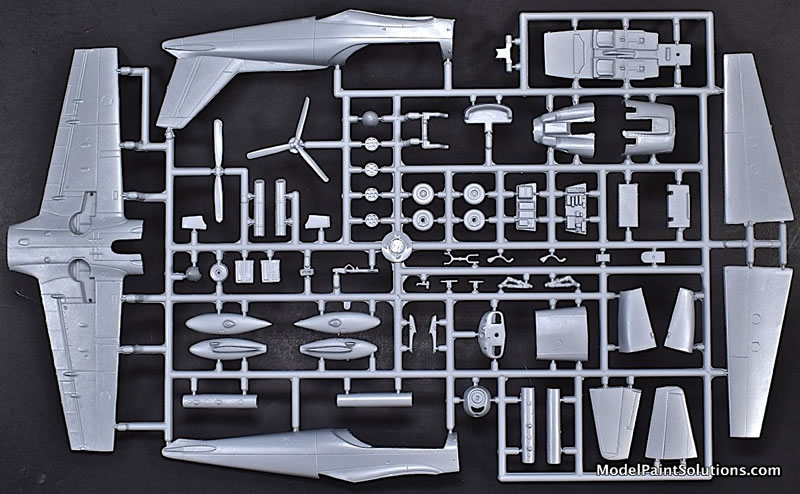
The cockpit, comprised of a floorboard with parts for two front seats, control sticks, and rudder pedals, is next up. Parts are provided for either a bank of avionics or an additional seat situated in the rear of the cockpit.
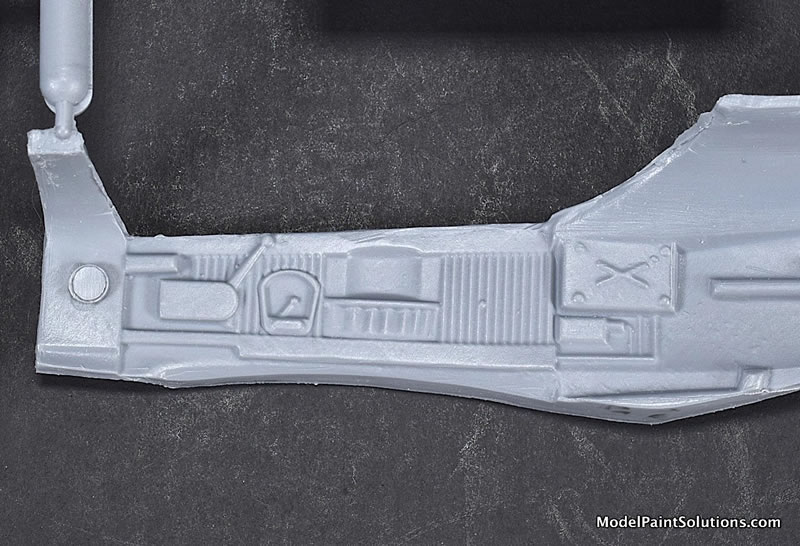
Details for the main instrument panel are provided on one of two, scheme-specific decals.
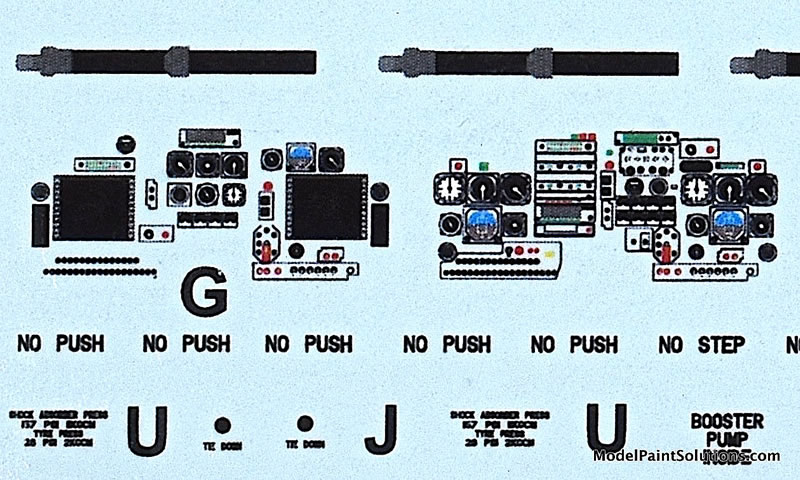
After the main panel is glued to the floorboard, the cockpit assembly is trapped between the fuselage halves, which have molded-in side-panel detail that will benefit from careful painting and a wash during assembly. The fuselage is completed by the addition of the previously assembled nose cowl to which is added a 2-bladed prop and nicely-molded spinner.
The wing is composed of a full-span lower half with left and right upper halves. To this assembly is added tip tanks (comprised of halves) and one hard point under each wing. Rocket launchers (from halves) are provided for each side.
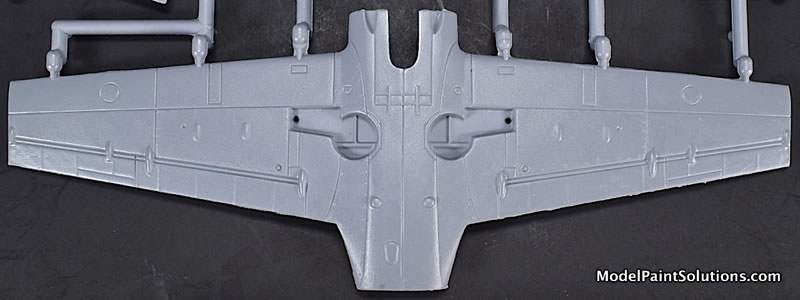
The assembled wing is then offered up to the fuselage and the single-piece horizontal stabilizer-elevator pieces are added next. Note: the stabilizer-elevator pieces have inscribed panel lines that are, unfortunately, as wide (and shallow) as are the adjacent elevator hinge lines. I'll be filling, sanding, and re-scribing these panel lines as well as the elevator hinge line when I build my SF.260.
The five-piece nose gear (with wheel well door) is next in sequence followed by the left and right main gear, each comprised of five-pieces. As with most of the smaller pieces, these parts will require some refreshing prior to use. Moreover, the main wheels/tires are comprised of halves, which usually require a bit of work to be made useable.
Last up is the single-piece canopy.
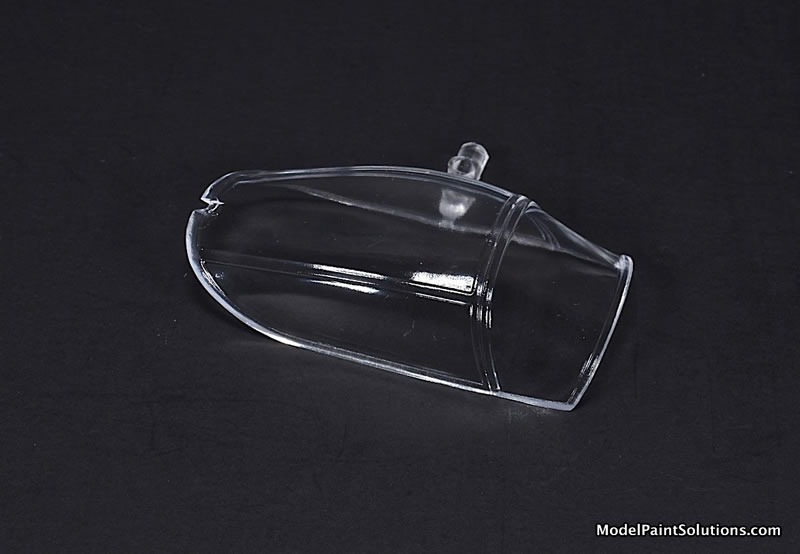
Although the plastic is clear, there is a slight texture to the surface of the canopy that may require a little buffing followed by a dip in your favorite clear coat. And, unless you're into serious canopy surgery, the kit will have to be posed with the canopy closed.
Color and Markings
The decals, printed by KPM, are nicely printed with good registration and color density.
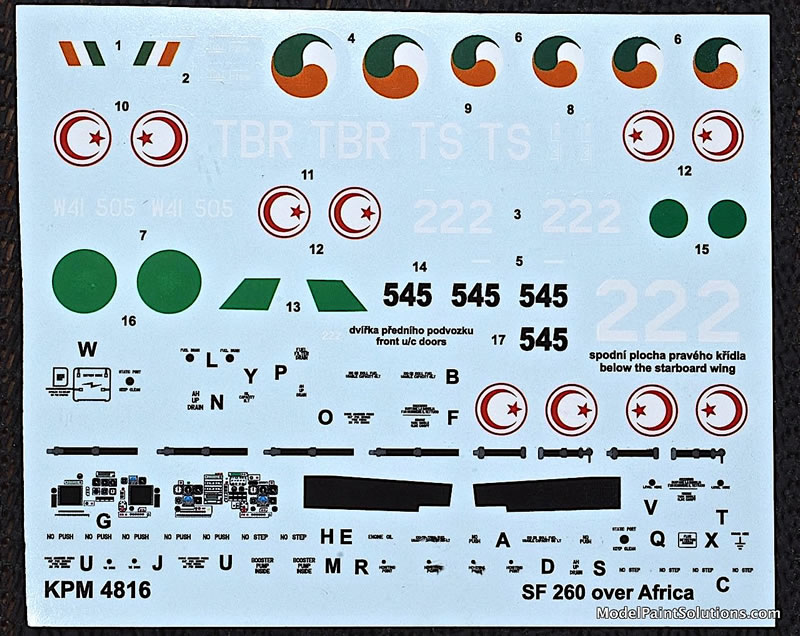
Markings for three airframes are provided. These include: 1) an over-all gloss-green airframe from the Irish Air Corps, 2) an aircraft from the Tunisian Air Force with 2-color uppers (brown and green) and a grey belly and, 3) a Libyan scheme of 3-color uppers (ochre, green, and dark sand) with a blue belly.
This kit is going to require some work. That said, the overall shape of the major components (wing and fuselage) seem to capture to svelte lines of the 1/1 version quite well, the kit is reasonably priced, and the schemes covered by the decals provide the builder with an opportunity to indulge in some fun, fine-line airbrushing; always an attraction for me. For those with some experience (and/or patience) this will be an enjoyable build producing a kit not often seen at model shows. Recommended.
Many thanks, to “The Weatherman” for the loan of the review kit.
Now go paint something!
—John
For more on this review visit Modelpaintsolutions.com
Text and pictures © John Miller / ModelPaintSol.com
Page Created 25 September, 2023
Last updated
26 September, 2023
Back to HyperScale Main Page
Back to Reviews Page

|
Home
| What's New |
Features |
Gallery |
Reviews |
Reference |
Forum |
Search